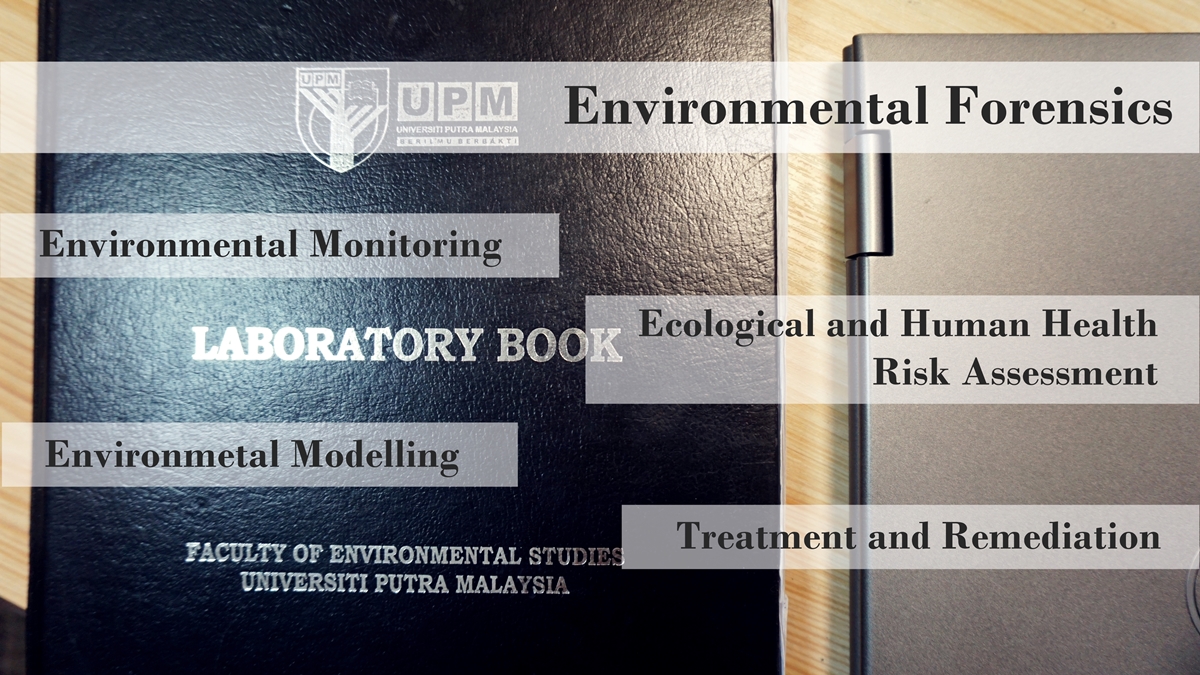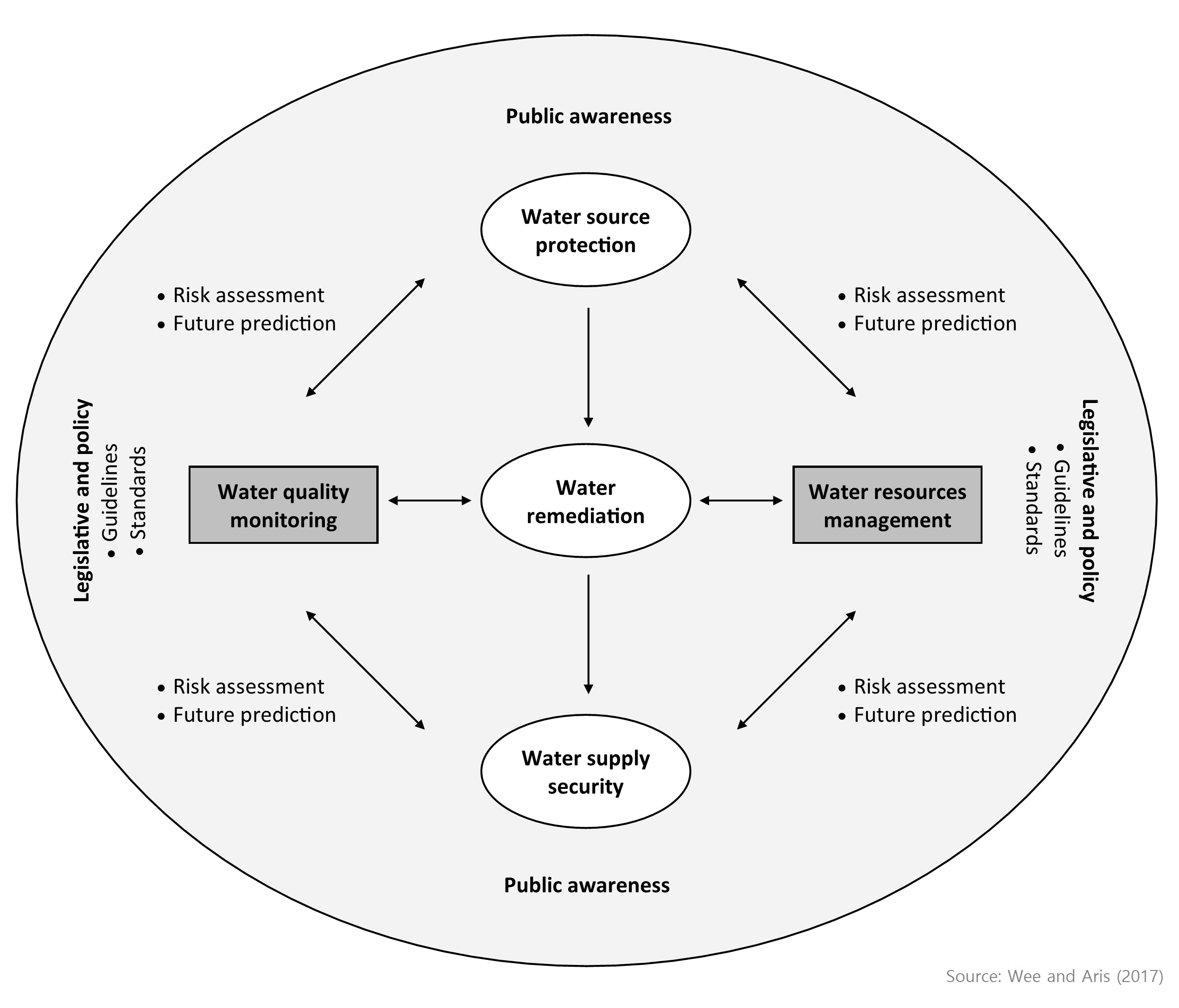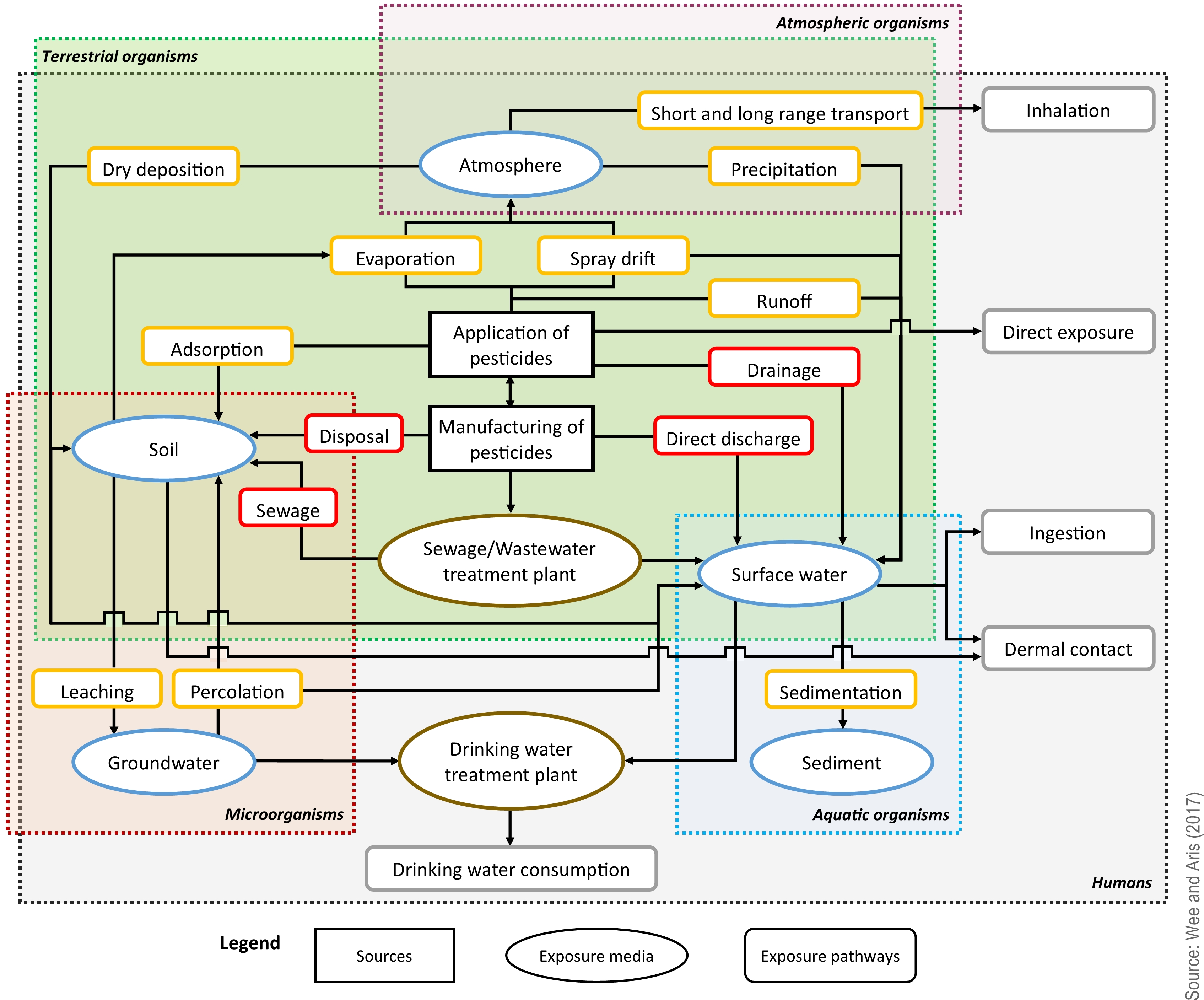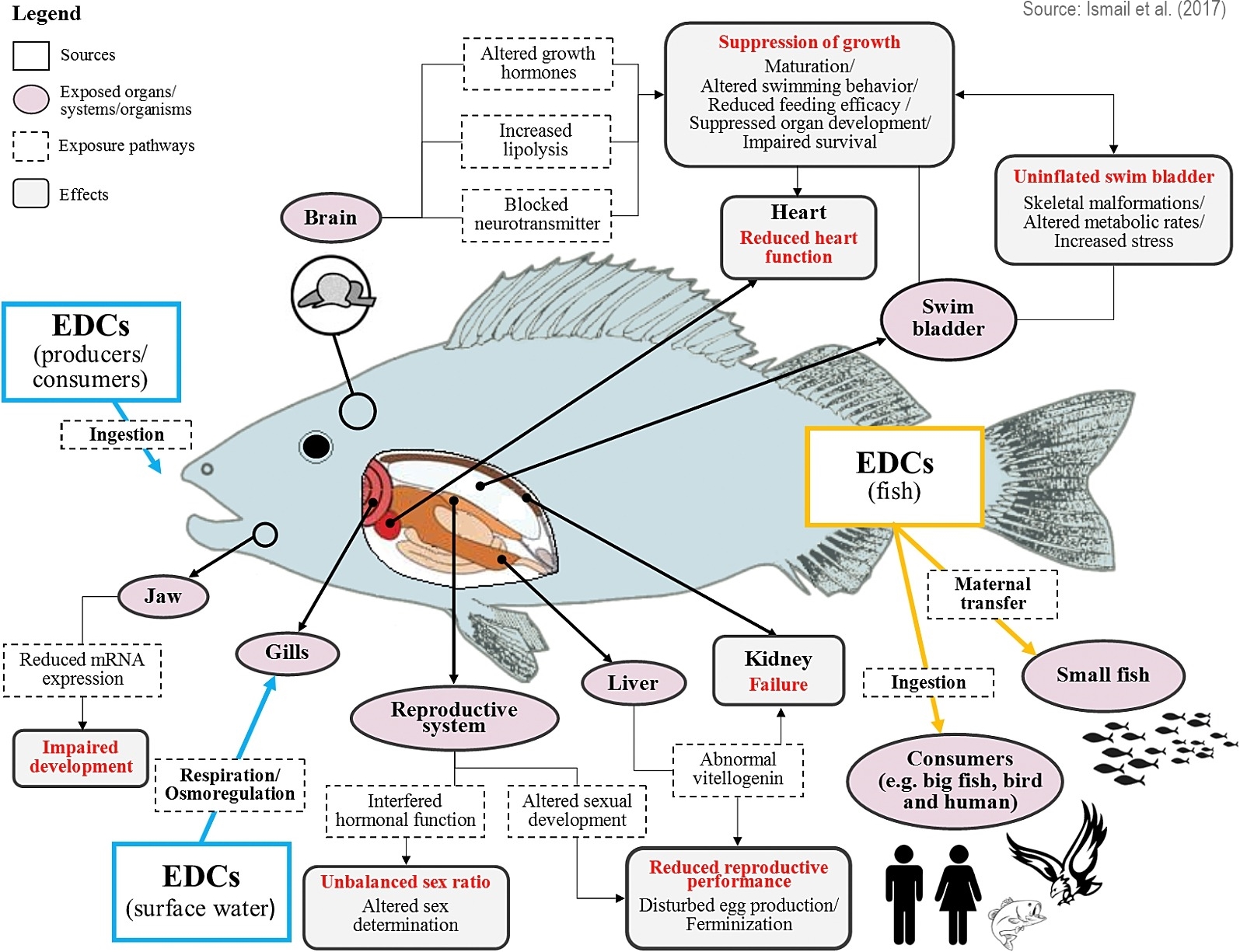Research Scope


Currently, we are focussing on environmental monitoring, risk assessment and development of endocrine disrupting compounds (EDCs) pollution index for riverine and coastal ecosystem health of Klang Valley, Malaysia, involved of a variety of scales such as surface water, sediment, food web, and drinking water, as the increased occurrence of EDCs impacts the organisms (i.e., terrestrial, aquatic, and micro-organisms) and humans with the altered exposure and risk. At the same time, we have scrutinized our research to human health and public perceived risk. Also, we are deeply committed in developing cost-effective water treatment that is beneficial in attenuation of EDCs.

EDCs, which are exogenous and emerging, comprise a wide-ranging scope of chemicals, both natural and synthetic. Natural EDCs include estrogens, androgens, and phytoestrogens. Meanwhile, synthetic EDCs, mainly industrial chemicals and their by-products, encompass polycyclic aromatic hydrocarbons (PAHs), polychlorinated biphenyls (PCBs), polybrominated biphenyls (PBBs), dioxins, furans, alkylphenols (APs), pharmaceuticals and personal care products (PPCPs), and pesticides. The broad scope of consumer products includes extensive utilization of industrial chemicals as additives for manufacturing with considerable production. The wide-ranging additive groups have been used in fragrances, flame retardants, paints, surfactants, plastics, adhesives, lubricants, sealants, detergents, disinfectants, surface cleaners, construction materials, electrical appliances, furniture, textiles, etc. Meanwhile, pharmaceuticals were utilized specifically as human and veterinary therapies. These numerous usages generate EDC loadings in environmental compartments from various point and nonpoint sources, during product manufacturing, usage and application, disposal, and discharge of chemicals or products. The varying behaviors, depending on their respective physicochemical properties.

The ubiquitous use of pharmaceuticals in prescription medicines has resulted in a relatively continuous discharge of active pharmaceutical ingredients (APIs) into water sources. APIs have become chemicals of emerging concern to the public because of their potential to reach drinking-water at trace level of concentration (ng/L). Therefore, holistic and dynamic environmental forensics research approach will be carried out to trace the origin and distribution of these contaminants. With identifications on occurrences of API in drinking water systems, the toxicity risks of each pollutant compound could be evaluated comprehensively and systematically. This proposed study could provide a profound understanding on the availability, mobility, and pollution status of APIs in the treated water of Greater Kuala Lumpur and Klang Valley. This study also aims to improve public understanding, identifying and suggest regulatory action when appropriate through policy and regulation revision. As part of this strategy, this research is examining ways to screen and prioritize pharmaceuticals that occur in drinking water for potential human health risk at low concentrations as well as to integrate the modelling approach that predict the distribution, pathway and fate of the APIs. Community participatory approach will be also implemented in this proposed research in order to increase knowledge and concern towards the proper pharmaceutical medications disposal and decrease the pharmaceutical in drinking water. Information generated from the proposed research will broadly impact the ability to evaluate the risk poses by the APIs as well as to minimize micropollutants and their transport to downstream drinking water supplies. This will help the government to respond to the concerns for more sensible public participation as well as to take appropriate action and make amendments on the legislation and thus ensuring public access to clean and treated water as part of the National Key Results Areas under the Government Transformation Programme.
Sze Yee Wee and Ahmad Zaharin Aris, (2017). Endocrine disrupting compounds in drinking water supply system and human health risk implication. Environment International, 106, 207-233.

Pesticides are of great concern because of their existence in ecosystems at trace concentrations. Worldwide pesticide use and its ecological impacts (i.e., altered environmental distribution and toxicity of pesticides) have increased over time. Exposure and toxicity studies are vital for reducing the extent of pesticide exposure and risk to the environment and humans. Regional regulatory actions may be less relevant in some regions because the contamination and distribution of pesticides vary across regions and countries. The risk quotient (RQ) method was applied to assess the potential risk of organophosphorus pesticides (OPPs), primarily focusing on riverine ecosystems. Using the available ecotoxicity data, aquatic risks from OPPs in the surface water of the Langat River, Selangor, Malaysia were evaluated based on general (RQm) and worst-case (RQex) scenarios. The study had been expanded to other classes of the wide ranging EDCs, including pharmaceuticals, hormones, and phenolic compounds.
Sze Yee Wee and Ahmad Zaharin Aris, (2017). Ecological risk estimation of organophosphorus pesticides in riverine ecosystems. Chemosphere 188, 575-581.
Tuan Fauzan Tuan Omar, Ahmad Zaharin Aris, Fatimah Md Yusoff, Shuhaimi Mustafa, (2017). An Improved SPE-LC-MS/MS Method for Multiclass Endocrine Disrupting Compound Determination in Tropical Estuarine Sediments. Talanta, 173, 51-59.
Sze Yee Wee, Tuan Fauzan Tuan Omar, Ahmad Zaharin Aris, (2016). Surface Water Organophosphorus Pesticide Concentration and Distribution in the Langat River, Selangor, Malaysia. Water Quality, Exposure and Health.

Fishes are a major protein food source for humans, with a high economic value in the aquaculture industry. Because endocrine disrupting compounds (EDCs) have been introduced into aquatic ecosystems, the exposure of humans and animals that depend on aquatic foods, especially fishes, should be seriously considered. EDCs are emerging pollutants causing global concern because they can disrupt the endocrine system in aquatic organisms, mammals, and humans. These pollutants have been released into the environment through many sources, e.g., wastewater treatment plants, terrestrial run-off (industrial activities, pharmaceuticals, and household waste), and precipitation. The use of pharmaceuticals, pesticides, and fertilizers for maintaining and increasing fish health and growth also contributes to EDC pollution in the water body. Human and animal exposure to EDCs occurs via ingestion of contaminated matrices, especially aquatic foodstuffs. This paper aims to review human EDC exposure via fish consumption. In respect to the trace concentration of EDCs in fish, types of instrument and clean-up method are of great concerns.
Nur Afifah Hanun Ismail, Sze Yee Wee and Ahmad Zaharin Aris, (2017). Multi-class of endocrine disrupting compounds in aquaculture ecosystems and health impacts in exposed biota. Chemosphere, 188, 375-388.
Latest Update : Wed, 21 Mar 2018 (raznisyafiq)
